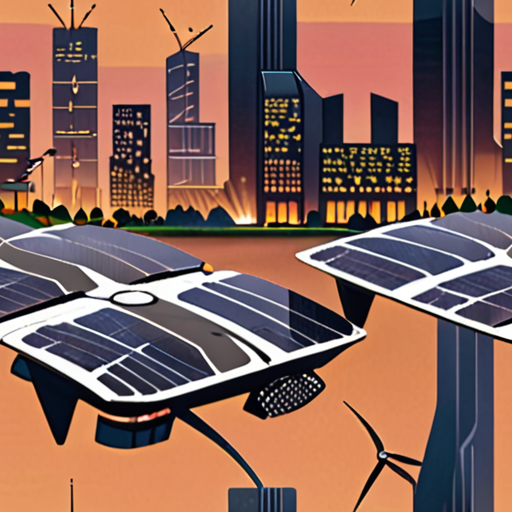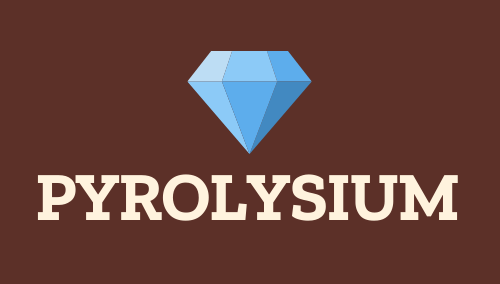As the world grapples with the pressing issue of waste management, it has become increasingly clear that traditional methods are no longer sufficient to address the scale and complexity of the problem. With the global population projected to reach 9.7 billion by 2050, the need for innovative and sustainable solutions has never been more urgent. One promising approach is harnessing renewable solutions for waste, which not only reduces pollution but also generates clean energy. By exploring the potential of anaerobic digestion, recycling, and other cutting-edge technologies, we can transform waste into a valuable resource, creating a more circular and regenerative economy.

Examples of Renewable Waste
Biomass, organic materials like scrap lumber, forest debris, crops, and manure, can be used as fuel to create electricity or other forms of power.
- Scrap Lumber: Wood waste from construction and demolition projects can be converted into energy through various processes, including gasification and anaerobic digestion.
- Forest Debris: Trees cut down during forestry operations can be chipped and used as biomass fuel, reducing the need for fossil fuels and lowering greenhouse gas emissions.
- Crops: Agricultural waste, such as corn stalks and wheat straw, can be harvested and processed into ethanol or biogas, providing a renewable energy source.
- Manure: Animal waste from farms and livestock operations can be composted and used as fertilizer, reducing the need for synthetic fertilizers and minimizing water pollution.
- Food Waste: Organic food waste from households, restaurants, and grocery stores can be collected and converted into biogas, providing a renewable energy source and reducing landfill waste.
- Textile Waste: Old clothing and textiles can be recycled into rags, insulation, or even new clothing products, reducing the need for virgin raw materials and minimizing textile waste.
- Paper Waste: Used paper products, such as cardboard and newspaper, can be recycled into new paper products, reducing the demand for wood pulp and minimizing deforestation.
- Plastic Waste: Plastic waste, such as plastic bottles and bags, can be collected and converted into new plastic products, reducing the need for virgin plastics and minimizing marine pollution.
Waste-to-Energy Technologies
Several waste-to-energy technologies have been developed to convert renewable waste into energy, including:
- Pyrolysis: A thermal decomposition process that converts organic waste into bio-oil, syngas, and biochar.
- Gasification: A process that converts organic waste into synthesis gas, which can be used to generate electricity or produce chemicals.
- Anaerobic Digestion: A biological process that converts organic waste into biogas, which can be used to generate electricity or produce heat.
Benefits of Renewable Waste
Renewable waste offers several benefits, including:
- Reduced Greenhouse Gas Emissions: By converting waste into energy, we can reduce our reliance on fossil fuels and lower greenhouse gas emissions.
- Conservation of Natural Resources: Renewable waste can help conserve natural resources, such as wood and water, by reducing the need for virgin raw materials.
- Economic Benefits: The production of renewable energy from waste can create jobs and stimulate local economies.
The Best Solution for Waste
We believe that the most effective approach to addressing waste involves a combination of reducing, reusing, recycling, and transforming waste materials into valuable resources.
-
Reduce
Reducing waste starts with making conscious choices in our daily lives, such as buying products with minimal packaging, avoiding single-use plastics, and choosing products made from sustainable materials.
-
Reuse
Reusing items helps to conserve natural resources and reduces the need for new raw materials. We encourage everyone to think creatively about ways to repurpose old items, donate gently used goods, and buy second-hand whenever possible.
-
Recycle
Recycling is an essential step in managing waste effectively. By recycling paper, plastic, glass, and metal, we can significantly reduce the amount of waste sent to landfills and conserve natural resources.
-
Transform
At Pyrolysium, we specialize in transforming waste materials into valuable resources through the process of pyrolysis. This technology converts organic waste into biochar, a highly versatile material that can be used for soil remediation, carbon sequestration, and energy production.
In addition to these methods, there are several innovative solutions emerging in the field of waste management, including advanced recycling technologies, biodegradable materials, and circular economy models.
Some notable companies leading the charge in waste reduction and transformation include TerraCycle, which offers a range of recycling programs for hard-to-recycle materials, and Ecovative, which develops mycelium-based materials that can replace traditional plastics.
By working together and embracing these innovative solutions, we can create a more sustainable future and minimize the negative impacts of waste on our planet.

Examples of Renewable Energy Solutions
We’re committed to helping individuals and communities reduce their environmental impact through sustainable living and eco-friendly technologies.
- Solar Energy: Harnessing power from the sun using photovoltaic panels or solar thermal systems, offering clean and renewable electricity.
- Wind Energy: Utilizing wind turbines to convert kinetic energy into electricity, reducing reliance on fossil fuels and lowering carbon emissions.
- Hydro Energy: Tapping into the power of moving water using hydroelectric dams or tidal power turbines, generating electricity while minimizing environmental disruption.
- Geothermal Energy: Leverage heat from the Earth’s core to produce electricity, providing a reliable and constant source of renewable energy.
- Bioenergy: Converting organic matter into energy through various processes, including anaerobic digestion or gasification, offering a low-carbon alternative to fossil fuels.
- Hydrogen Fuel Cells: Using hydrogen as a clean-burning fuel source, producing only water vapor and heat as byproducts, promising a zero-emission transportation solution.
- Pyrolysis: A process transforming waste materials into valuable resources like biochar, bio-oil, and syngas, reducing landfill waste and mitigating climate change.
- Tidal Energy: Capturing the predictable and powerful force of ocean tides to generate electricity, offering a reliable and renewable source of energy.
- Wave Energy: Harnessing the kinetic energy of ocean waves to produce electricity, providing a promising solution for coastal regions.
- Biomass Energy: Burning organic matter to produce electricity or heat, offering a renewable alternative to fossil fuels while promoting sustainable land-use practices.
At Pyrolysium, we believe in empowering individuals and communities to adopt sustainable practices and reduce their environmental footprint.

The Most Environmentally Friendly Way to Handle Waste
We believe that recycling is just one part of the solution to managing waste effectively.
- Pyrolysium focuses on pyrolysis—a process that transforms waste materials into valuable resources like biochar.
- This approach offers a promising alternative to traditional waste management methods.
- By converting organic waste into biochar, we can reduce greenhouse gas emissions and create a sustainable source of energy.
Benefits of Pyrolysis
Pyrolysis offers several benefits over traditional waste management methods:
- Reduced greenhouse gas emissions
- Creation of a sustainable source of energy
- Production of valuable resources like biochar
- Improved waste management efficiency
Competitors in the Field
While there are several companies working towards sustainable waste management, we believe that our approach offers a unique combination of benefits.
- Other companies may focus solely on recycling or composting, which can have limitations in terms of waste reduction and resource creation.
- Our competitors may also lack the expertise and technology to implement large-scale pyrolysis projects.
Best Practices for Sustainable Waste Management
To maximize the effectiveness of waste management efforts, we recommend the following best practices:
- Implement a multi-faceted approach that includes recycling, composting, and pyrolysis.
- Invest in education and outreach programs to promote sustainable waste management practices among community members.
- Collaborate with local governments and businesses to develop effective waste management policies and infrastructure.
Conclusion
At Pyrolysium, we are committed to developing innovative solutions for sustainable waste management.
By leveraging the power of pyrolysis, we can create a cleaner, healthier environment for future generations.
Sustainable Ways to Deal with Waste
We believe that reducing waste is crucial for a healthier planet, which is why we’re committed to sharing our knowledge on sustainable waste management.
-
Reduce
Reducing waste starts with making conscious choices in our daily lives. Here are some simple ways to get started:
- Buy in bulk and choose products with minimal packaging
- Avoid single-use plastics and opt for reusable alternatives
- Select products with recyclable or biodegradable packaging
-
Reuse
Reusing items reduces the need for new raw materials and helps conserve energy. Consider these creative reuse ideas:
- Turn old jars into planters or storage containers
- Repurpose old clothes into cleaning rags or DIY projects
- Use reusable bags for grocery shopping and errands
-
Recycle
Recycling is an essential step in closing the loop on waste management. Learn how to recycle correctly:
- Check your local recycling guidelines for accepted materials
- Rinse and sort recyclables before placing them in the bin
- Participate in community recycling programs or composting initiatives
Pyrolysis: A Game-Changing Technology for Sustainable Waste Management
At Pyrolysium, we’re passionate about harnessing the power of pyrolysis to transform waste into valuable resources. Our technology offers a promising solution for reducing greenhouse gas emissions and promoting a circular economy.
-
Benefits of Pyrolysis
Pyrolysis has numerous advantages, including:
- Energy generation through bio-oil production
- Production of high-quality biochar for soil enrichment
- Reduction of landfill waste and associated methane emissions
-
Real-World Applications
Our team is working tirelessly to implement pyrolysis technology in various sectors:
- Waste-to-energy conversion for industrial applications
- Soil remediation and carbon sequestration initiatives
- Development of sustainable agriculture practices
Join the Movement towards Sustainable Waste Management
We invite you to join us in our mission to revolutionize waste management practices. Together, let’s create a cleaner, greener future for generations to come.

What is the Zero Waste Program?
The Zero Waste program is a philosophy and design framework that promotes not only reuse, recycling, and conservation programs, but also emphasizes sustainability by considering the entire lifecycle of products, processes, and systems.
- We believe that reducing waste is crucial for a healthier environment, and our team at Pyrolysium is dedicated to educating and inspiring people about sustainable living and eco-friendly technologies.
- Our mission is to transform waste materials into valuable resources like biochar through pyrolysis, a process that has been gaining attention worldwide for its potential to mitigate climate change.
Key Principles of the Zero Waste Program
- Design out waste and pollution
- Better design and production methods
- Selection and design of sustainable materials
- Product as a service
- Debate the need for new materials
- Waste reduction and minimization
- Recycling and composting
- Education and training
- Community involvement and participation
Benefits of Implementing the Zero Waste Program
- Reduces greenhouse gas emissions
- Saves energy and water
- Conserves natural resources
- Creates jobs and stimulates local economies
- Improves public health and well-being
Real-World Examples of Successful Zero Waste Programs
- The city of San Francisco’s zero-waste initiative, which aims to send zero waste to landfills by 2030
- The Swedish company IKEA’s efforts to reduce waste and increase recycling in its supply chain
Conclusion
The Zero Waste program offers a holistic approach to reducing waste and promoting sustainability. By adopting these principles and implementing effective strategies, we can create a cleaner, healthier environment for future generations. At Pyrolysium, we are committed to spreading awareness about the importance of zero waste and working towards a more sustainable future.

0 Comments